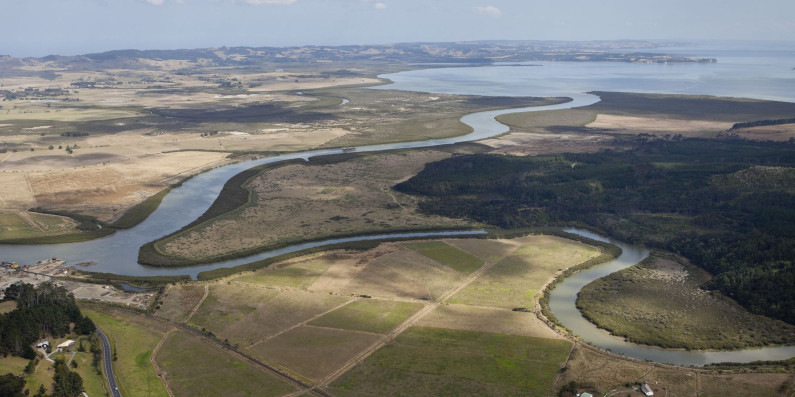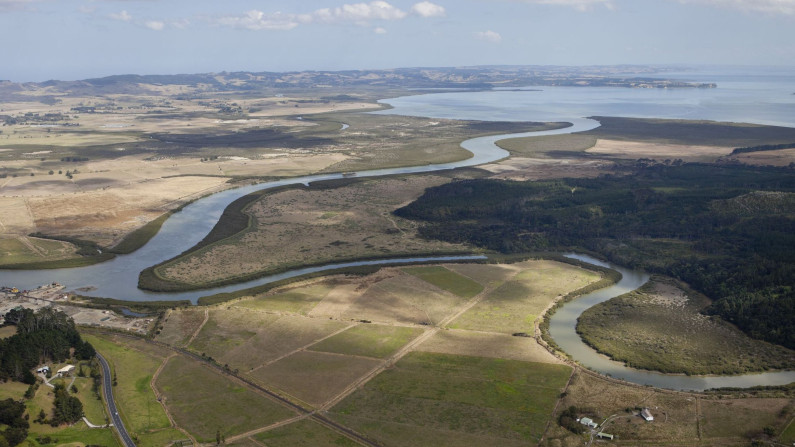
$100 million in Jobs for Nature funding for remediating Kaipara Moana, our largest harbour
Kaipara Moana is Aotearoa’s largest harbour and one of the largest tidal ecosystems in the world.

Kaipara Moana is Aotearoa’s largest harbour and one of the largest tidal ecosystems in the world.
After many years of land-use change and development, the health of the Kaipara has degraded. An estimated 700,000 tonnes of sediment is deposited into the harbour each year – about seven times the amount before human settlement.
Remediating the health of the harbour is the focus of the Kaipara Moana Remediation (KMR) programme. MfE is providing $100 million in funding for the programme as part of the Jobs for Nature programme.
The funding is being used to reduce the volume of sediment entering the harbour through a variety of ways including waterway fencing to keep livestock away from water, and riparian planting of waterway edges and wetlands. Funding is also being put towards training, accreditation and jobs for locals in nature restoration.
Kaipara Moana is a biologically rich and significant region. It houses many taonga species in sand dunes, seagrass, freshwater and estuarine ecosystems.
It is home to the Kaipara Uri (descendants of the Kaipara region) and is of great traditional, cultural, historical, spiritual and economic importance.

Image: Auckland Council
Tame Te Rangi, Chair of the Kaipara Moana Remediation Joint Committee says “Efforts to revitalise the mauri of the Kaipara Moana are scaling up rapidly across 6,000 square kilometres of waterways and wetlands. Currently the programme contracts directly with rural landowners to reduce sediment losses to nearby streams, rivers, estuaries and coastal waters”.
Since the KMR programme began in 2021, it has seen disruptions from COVID-19 and record-breaking wet weather which brought major floods and supply chain disruptions to the region.
Justine Daw, Pou Tātaki for the Kaipara Moana remediation programme says "Given the challenges, I am even more proud of what the programme team and our many partners have managed to achieve through the programme to date (28 February 2023 figures). KMR is scaling up rapidly, with over 475 landowners undertaking sediment reduction projects or working with KMR to scope projects – almost one in three landowners in the catchment.”
“This engagement has resulted in over 355 sediment reduction plans or farm environment plans contracted, with over 50 more in development. Through the plans, over 525,000 native plants have been planted or contracted for planting in 115 hectares of riparian, wetland, and coastal areas of the Kaipara Moana catchment, and almost 400 kilometres of fencing has been completed or contracted for delivery – more than double the distance from Whangārei to Auckland.”
“Our projects include a number of Whenua Whānui grants which support whānau, marae, hapū, iwi and community-led action to protect waterways flowing into the Kaipara Moana. To date, KMR has contracted 7 groups and worked with 10 more groups to develop and deliver Whenua Whānui projects focused on local, community-facing benefits.”
Since November 2021, the KMR programme has involved the development of training and accreditation courses to upskill over 50 local field advisors, including tangata whenua, to work with landowners.
So far, 24 locally contracted businesses and 19 nurseries have been accredited. KMR’s investment to date has created nearly 100,000 additional hours of work in the catchment.
The KMR programme has become an example of how councils, government agencies, and iwi can work together to provide positive outcomes for the environment.
Through the combined efforts of Ngā Maunga Whakahii o Kaipara, Te Rūnanga o Ngā Whātua, Te Uri o Hau, Northland Regional Council and Auckland Council, the programme has provided an opportunity to test and implement approaches to scale up remediation at pace across a large-scale catchment.
Find out more about the KMR programme [KMR website]
Jobs for Nature programme
The Jobs for Nature programme is a Government initiative which creates nature-based jobs to:
As of March 2023, the Jobs for Nature programme has: